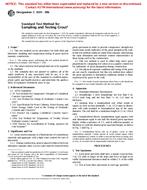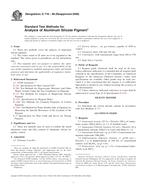1.1 This practice describes the elementary linear regression analysis of basic treadwear data as obtained according to Test Method
1.2 The basic treadwear data are obtained as groove depth loss measurements by procedures described in Test Method
1.3 A linear regression analysis is performed for the relationship between average tire tread depth and the test distance traveled by the test vehicle, on which the test tires are mounted. From this analysis a rate of wear is determined: groove depth loss per unit distance.
1.4 Linear treadwear is defined as an essentially constant rate of wear, after break-in, which results in a linear regression coefficient of determination, R2, equal to or greater than 0.95 when obtained for a data set where the number of measurement intervals, n, is at least 3. Each measurement interval represents a specific test distance.
1.5 This practice is not applicable to the prediction of treadlife for tires that exhibit non-linear or irregular treadwear.
1.6 Evaluation parameters are given for both SI and inch-pound units; either may be used. The evaluation parameters as defined are ones typically used in the tire testing industry and no special claim is made for superiority of these parameters and terms over other terms and parameters that may be developed.
Product Details
- Published:
- 01/01/1997
- Number of Pages:
- 3
- File Size:
- 1 file , 21 KB


